|
27. Pieris rapae (Linnaeus, 1758) / Small white / Pieridae – Pierinae
NL: klein koolwitje, knollenwitje / D: Kleiner Kohl-Weiβling / F: piéride de la rave, le petit blanc du chou
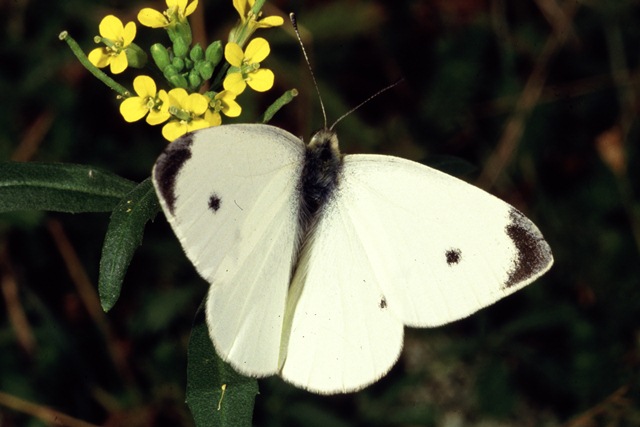 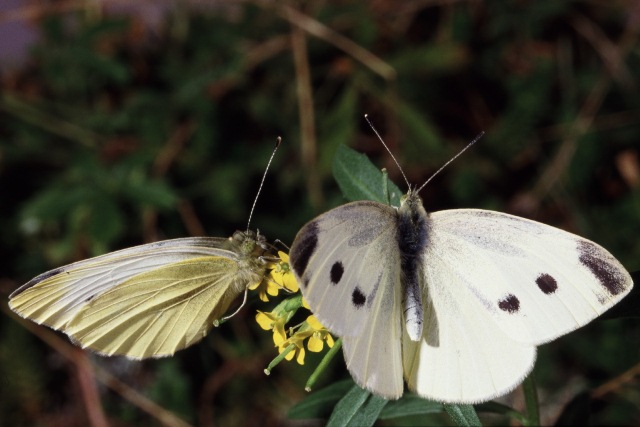 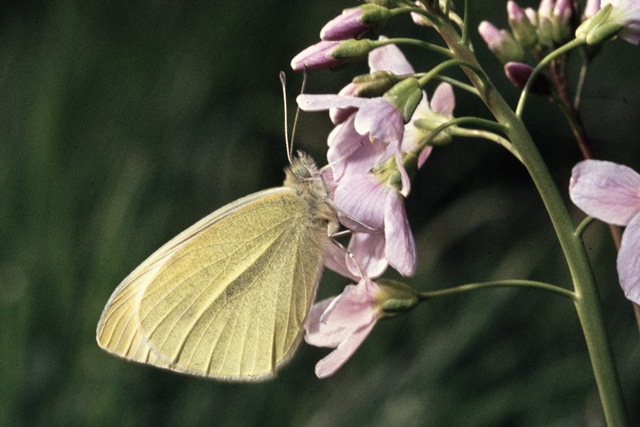
Photographs: Frits Bink ©.
Medium sized or large, wing length 25 (21-27) mm, variable in size and colour. Occurs everywhere in the Benelux, most numerous in the coastal region, on arable and fallow fields, in the countryside and urban area in gardens. It is probably the most common and widespread species of our indigenous butterfly fauna and often a pest on cabbages.
Butterfly is on the wing from end-April until mid-October, and peaks mid-May and in mid-July, the species is known from maritime and severe continental climates amplitude 4 to 20, the required heat sum is 450°d and the tolerated 2900°d, the corresponding climate windows are 20 weeks and full year open.
This is one of the most successful species in manmade landscapes. It has also spread recently almost worldwide: it appeared in America about 1860, later in Australia, New Zealand and the islands of Hawaii and Bermuda (Scott 1986: 216).
From an ecological point of view the difference between the small white (Pieris rapae) and the large white (Pieris brassicae) is the use of host plants. The former is able to feed on small plants because the larvae live individually, whereas the latter lives gregariously and thus needs big plants.
Ecological characteristics
Behaviour over time
Overwintering: pupa attached on trunk, stone or wall.
Reproduction: oviposition starts after 3-5 days when the body contains 53 (40-65) eggs, potential production 8 times as much.
Larval feeding periods: very short, 2 to 3 weeks in period from early-May until end-October.
Generations: in temperate climate 3 or 4.
Spreading of risk: facultative diapause in pupal stage and migration in the adult stage.
Life cycle: egg 5 (3-7) days; larva 17 (11-22) days; pupa 11 (7-13) days and during overwintering 21- 47 weeks.
Life span of adult: rather long, 3 weeks.
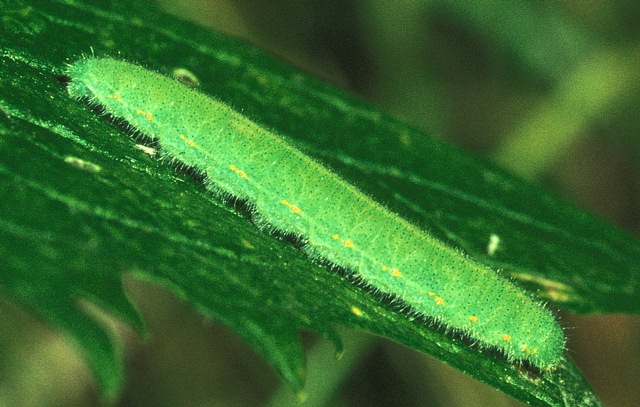 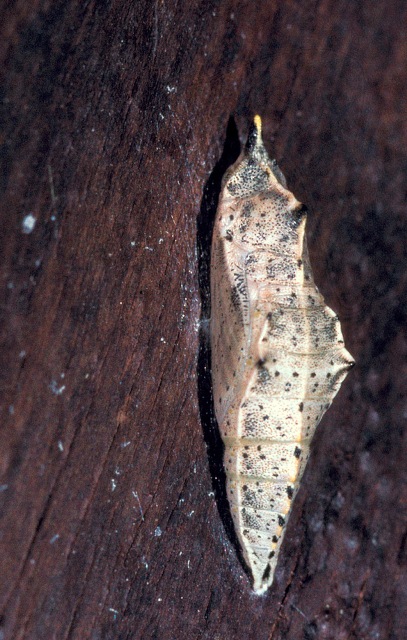
Photographs: Frits Bink ©.
Behaviour in space
From stay-at-home to migrant: nomad in the temperate region, migrant in the Mediterranean.
Finding a mate: male patrols and inspects every white butterfly.
Orientation in the landscape: on landscape structures like sea shore but also small ones like gardens.
Oviposition: in most cases a single egg on a small host plant, but will oviposit some more on a large plant like a cabbage.
Defence
Threats from other organisms: larva is well camouflaged, adult is ignored by birds.
Threats from the environment: larva and adult can survive periods of bad weather.
Feeding habits
Adult: nectar of all kind of flowers, drinking water in mud puddles collectively in periods of hot and dry weather.
Larva: feeds on mature leaves and flower buds.
Larval foodplants
Plant species: Brassicaceae, e.g. Alliaria petiolata, Arabis glabra, A. hirsuta, Armorica rustica, Barberea vulgaris, Brassica napus, B. nigra, B. oleracea, B. rapa, Cakile maritima, Cardamine hirsuta, C. pratensis, Cochlearia officinalis, Crambe maritima, Diplotaxis muralis, D. tenuifolia, Rorippa amphibia, R. sylvestris, Raphanus raphanistrum, Sinapis arvens, S. alba, Sisymbrium officiale. Resedaceae, Reseda alba, R. lutea, R. luteola.
Tropaeolaceae, Tropaeolum majus.
Journal
Rearing experiment based on specimen from Amerongen, Netherlands:
7 September 1985 one female in copula caught in the garden.
9 September: first eggs laid, 34 in one day.
10 September: 58 eggs laid.
11 September: 63 eggs laid.
17 September: female dissected, total egg production 359 (see table 27-1).
16 September: first eggs hatched.
22 September: larvae in second instar.
26 September: larvae in fourth instar.
5 October: first pupae observed.
14 October: first adults appeared, females.
26 October: first eggs were laid.
Butterflies hide from sunshine as soon as temperature reaches 34°C.
Table 27-1. Results of dissections

Table 27-2. Collection and observation localities
D, Eschweiler 50° 47’ 09”N – 6° 16’ 37”E; 18 June 1983.
D, Lorch 300m, 50° 02’ 05”N – 7° 47’ 56”E; 31 July 1985.
DK, Frøstrup 57° 05´ 48”N – 8° 52´ 54”E; 13 June 2004.
F, Aurel, 400 m, 44° 43’N – 5° 16’E; 29 August 1984; 2 September 1984.
F, Brittany, Telgruc-sur- Mer 48° 12’ 25”N – 4° 22’ 25”W; 29 September 2004.
F, la Bruyère 45° 39’ 01”N – 5° 38’ 09”E; 25 August 1984.
F, Cap Blanc-Nez 30 m, 50° 55’ 37”N – 1° 42’45”E; 10 June 2000.
F, Lorraine, Dieue-sur Meuse 49° 05’ 11”N – 5° 27’ 25”E; 19 August 1984.
F, Maison-du-Bois 46° 57’ 57”N – 6° 25’ 17”E; 24 August 1984.
F, Montmédy 217 m, 49° 31’ 07”N – 5° 21’ 33” E; 18 August 1984.
F, Normandy, Havre de Surville 49° 16’ 47”N – 1° 40’ 23”W; 19 September 2005.
F, Vosges, le Zinnkoepfle 481 m 47° 57’ 56”N – 7° 15’ 08”E; 10 July 1984.
NL, Amerongen, garden 52° 00’ 01”N – 5° 27’ 34”E; 1975-1986.
NL, Bennekom, garden 51° 59’ 30”N – 5° 40’ 34”E; 1988-2014.
NL, Leersum, garden 52° 00’ 29”N – 5° 24’ 04”E; 1975-1986.
NL, Rottemeroog 53° 32’ 30”N – 6° 34’ 32”E; 9 September 2000.
Fig. 27-1. Pieris rapae, phenogram adapted from Fichefet et al. 2008: 91.
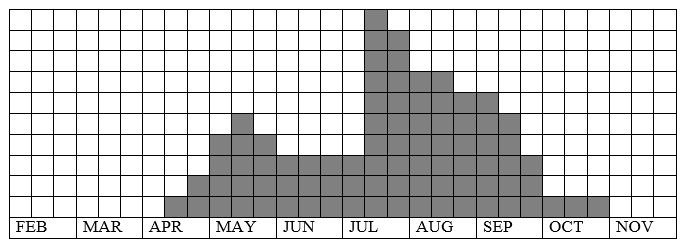
Fig. 27-2. Pieris rapae, habitat characteristics.
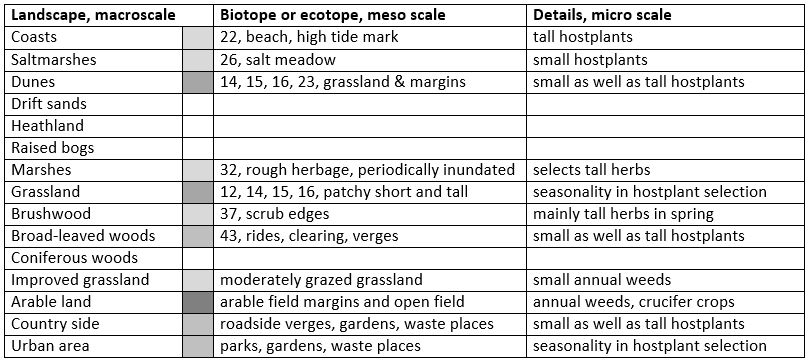
Fig. 27-3. Pieris rapae, climate matrix, heat-sums 450 - 2900°d.
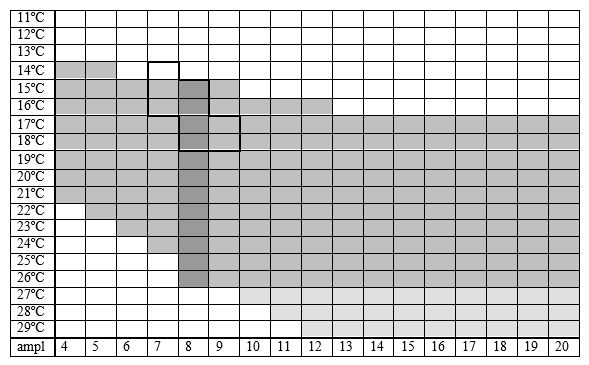
|










